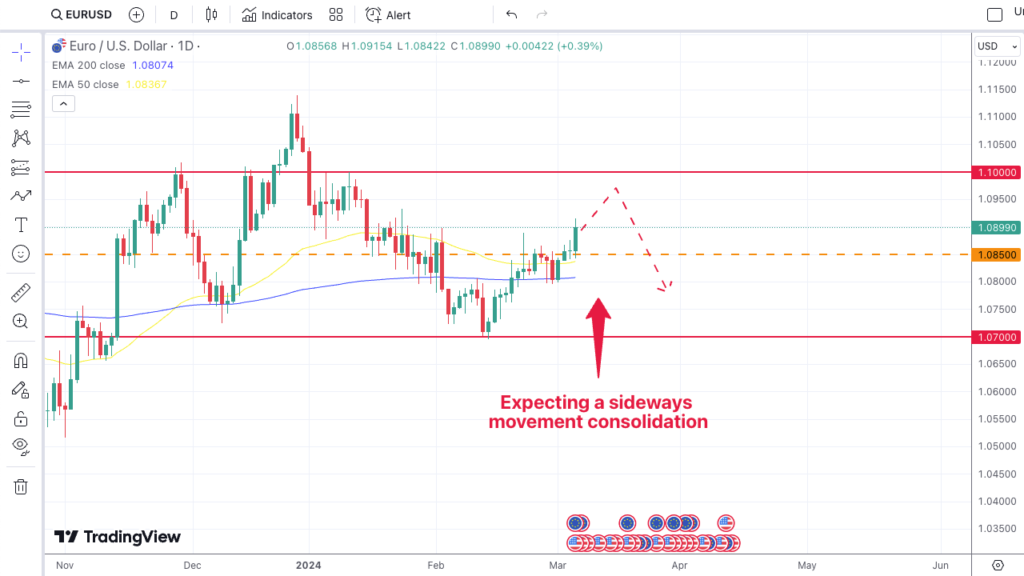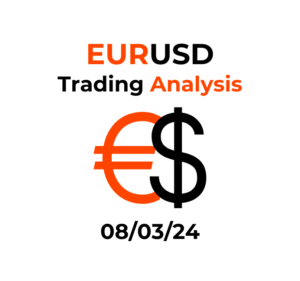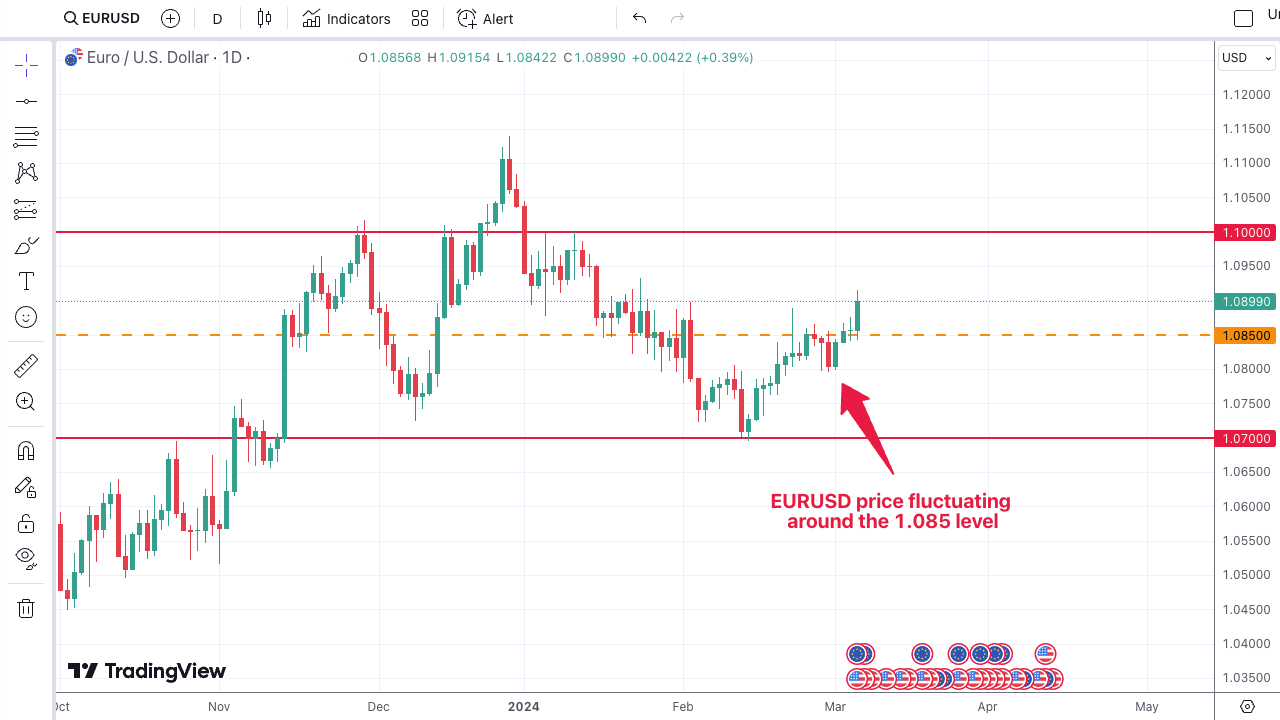EUR/USD has been stuck in a state of indecision and consolidation, with limited momentum and volatility observed in recent sessions. The currency pair appears range-bound between key support and resistance levels, reflecting the overall uncertainty in the market.
At present, the 1.07 level acts as a significant support, while the 1.10 level serves as a major resistance barrier. Currently hovering around 1.0850, EUR/USD finds itself sandwiched between these crucial levels, indicating a lack of clear direction in the near term.
Technical indicators such as the 50-day and 200-day Exponential Moving Averages (EMA) offer additional insight into potential support and resistance zones, further reinforcing the range-bound behavior of the pair. Despite occasional fluctuations, the broader outlook suggests a continuation of the consolidation pattern.
Market Sentiment and Influencing Factors
The upcoming nonfarm payroll numbers, scheduled for release on Friday, are expected to play a pivotal role in shaping market sentiment and risk appetite. Until then, EUR/USD may experience subdued trading activity, characterized by choppy conditions and limited movements.
Both the Federal Reserve and the European Central Bank (ECB) are anticipated to adopt accommodative monetary policies later this year, with potential rate cuts on the horizon. The ECB’s potential response to the German recession adds to the overall range-bound sentiment of the pair, as market participants await further clarity on central bank actions.
Geopolitical factors and global economic uncertainties also contribute to market sentiment, with investors closely monitoring developments that could influence the EUR/USD trajectory. Any surprises in economic data releases or geopolitical events may lead to short-term fluctuations in the currency pair.
Short-Term Forecast and Trading Strategies
Given the prevailing market conditions and outlook, EUR/USD is likely to continue its sideways movement, offering limited opportunities for significant breakouts or trend developments. Traders may consider employing short-term trading strategies, such as scalping or utilizing technical indicators like stochastic oscillators, to capitalize on intraday price fluctuations.
Key support and resistance levels, including 1.07 and 1.10 respectively, should be closely monitored for potential breakout or reversal opportunities. The outcome of the nonfarm payroll report is expected to influence market sentiment, with any surprises likely to impact the USD and, consequently, EUR/USD.
Summary and Recommendations
In summary, EUR/USD trading during the upcoming week is expected to be characterized by sideways movement and consolidation, with a lack of clear directional bias. Traders should exercise caution and remain adaptable to changing market conditions to navigate the range-bound environment effectively.

Monitoring key economic events, particularly the nonfarm payroll report, will be crucial for gauging market sentiment and identifying potential catalysts for movement. Given the uncertainty surrounding central bank policies and geopolitical developments, traders may opt for shorter-term trading strategies and closely manage risk exposure during the week of March 11th to March 15th.
As traders brace for another week of forex trading, the EUR/USD pair remains in focus, poised to navigate through the choppy waters of market uncertainty. With a keen eye on key support and resistance levels, as well as significant economic events, traders can position themselves strategically to capitalize on short-term opportunities while navigating the broader consolidation phase.


